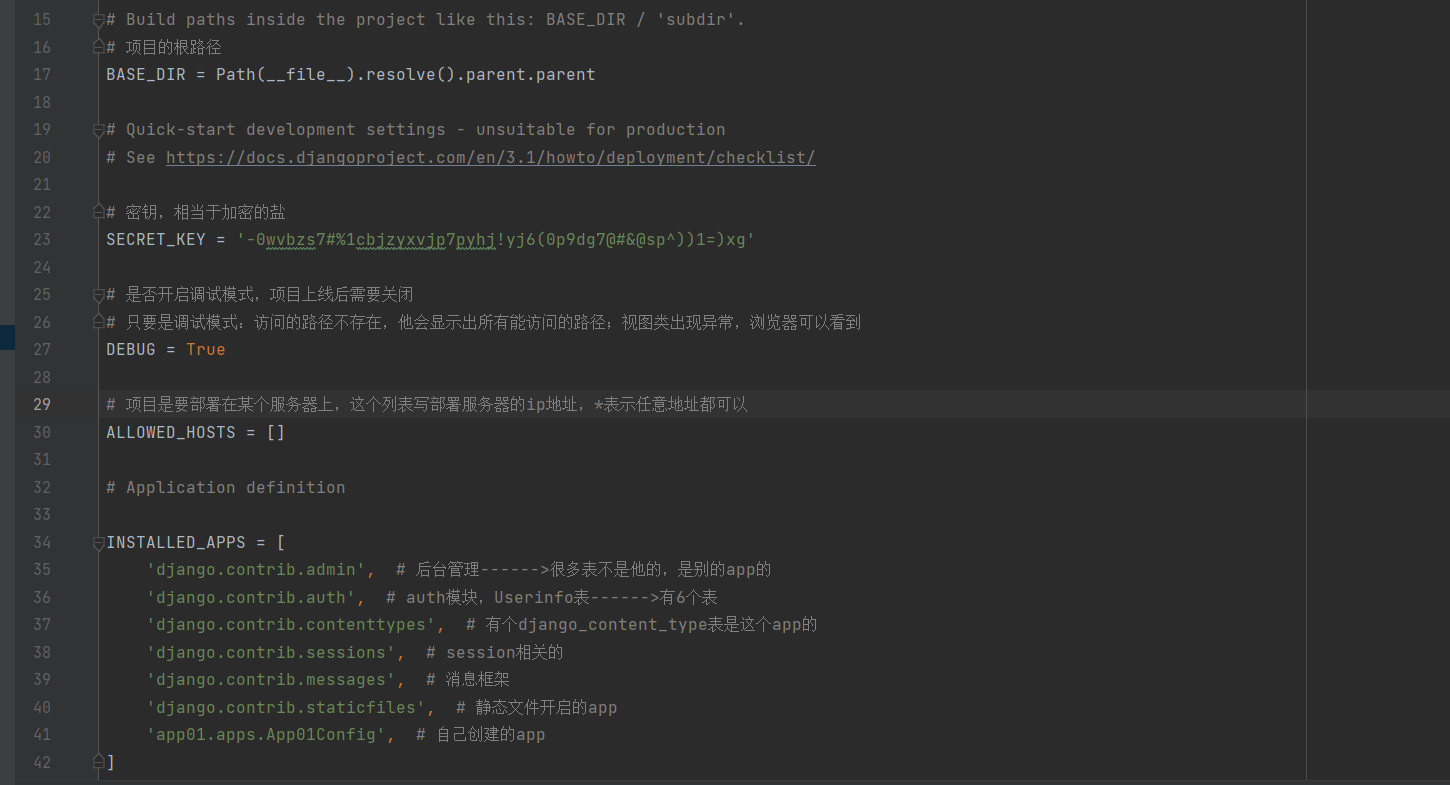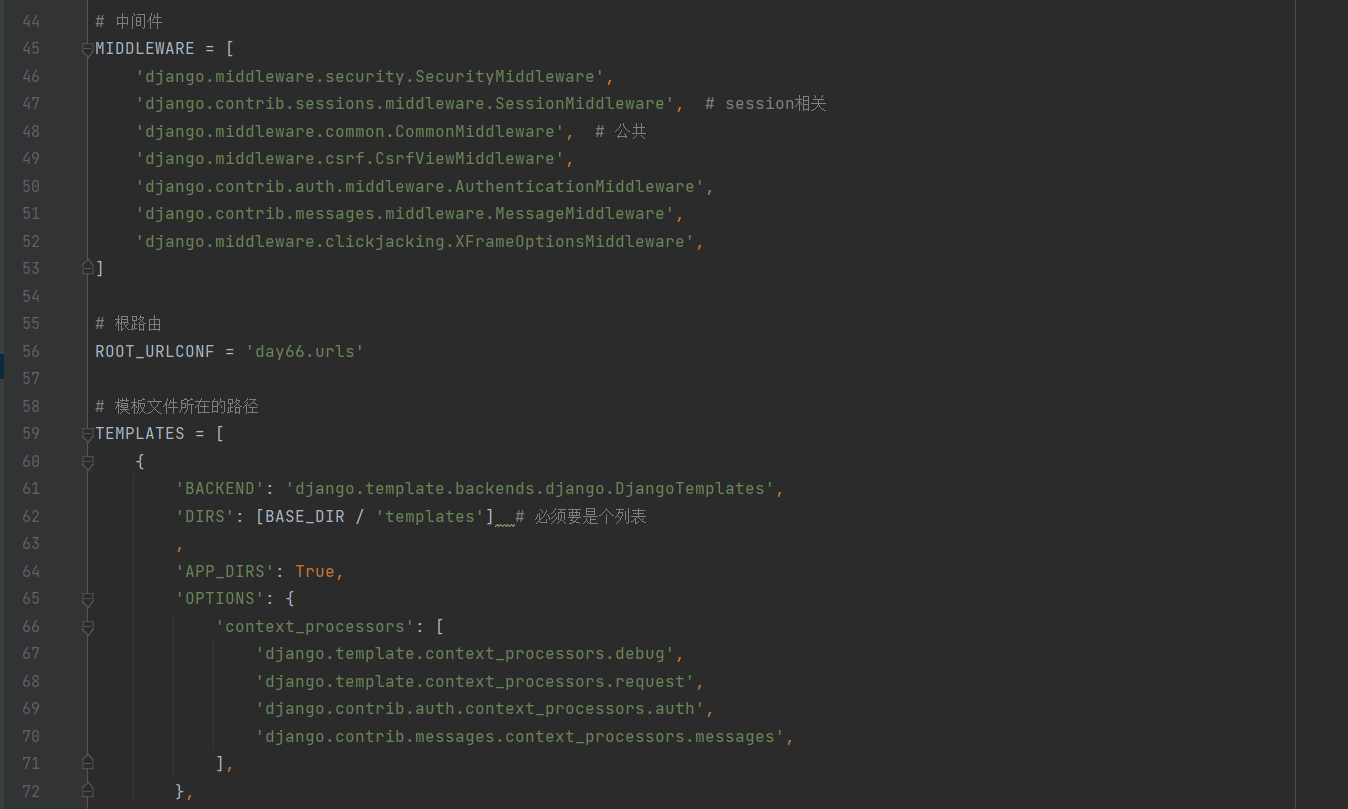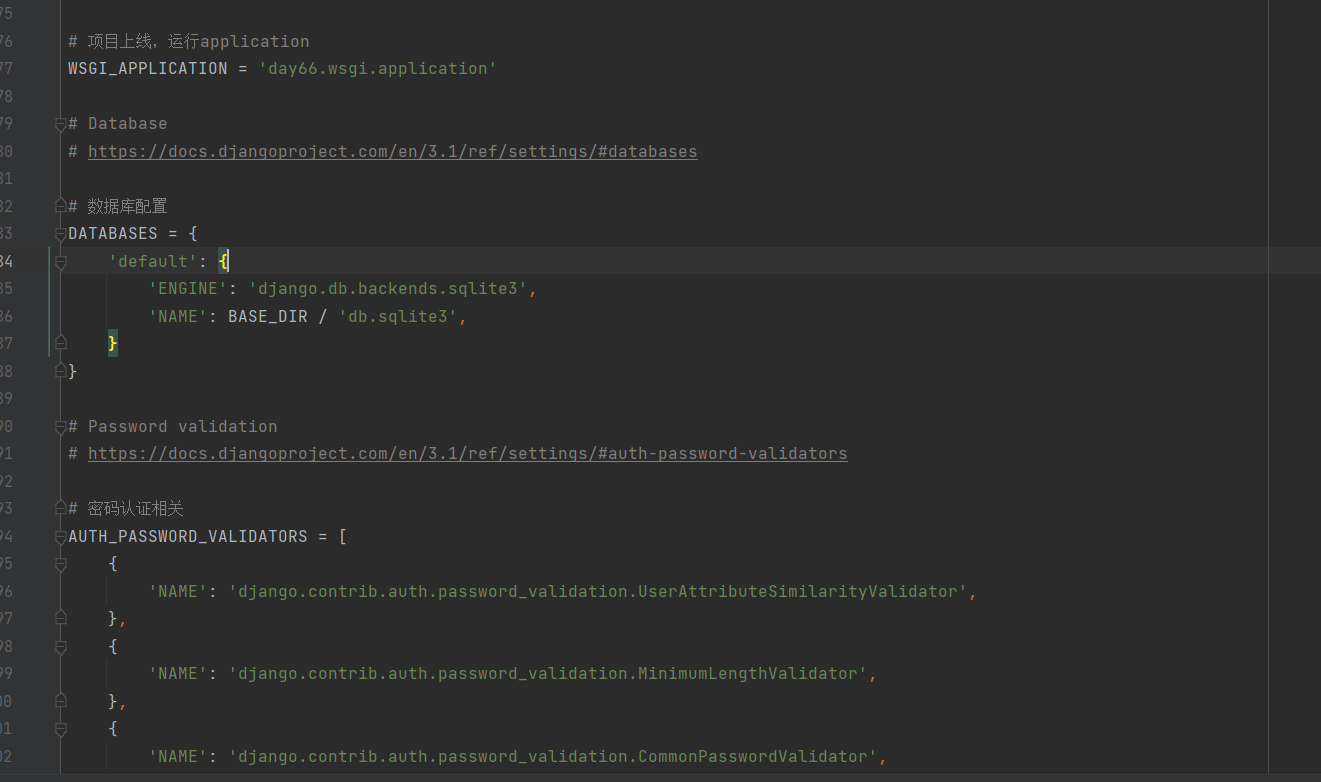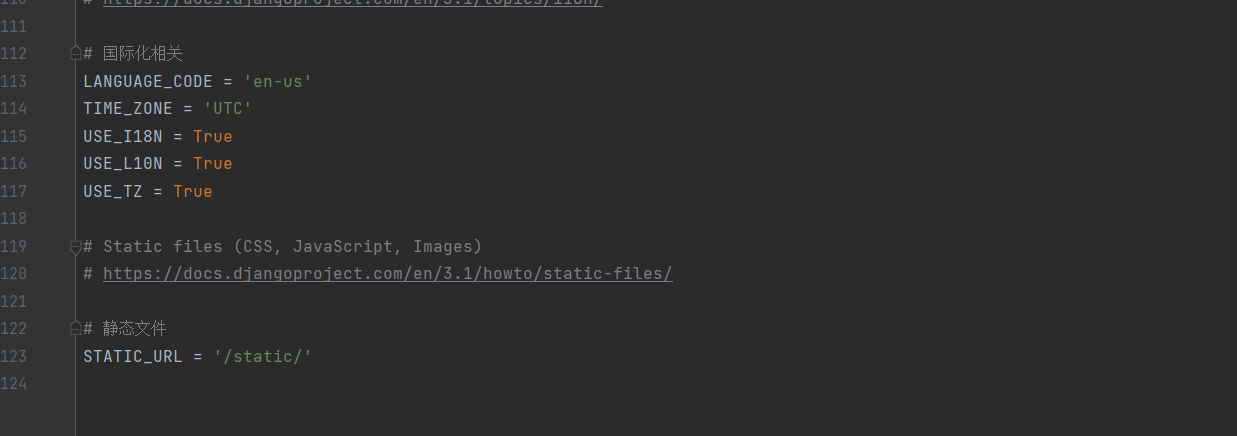django配置文件作用:




drf 登录功能:
view内:
from .models import UserInfo, UserToken
from rest_framework.viewsets import ViewSet
import uuid
from rest_framework.response import Response
from rest_framework.decorators import action
class UserView(ViewSet):
@action(methods=['POST'], detail=False)
def login(self, request):
# 1.从request.data中拿出数据
username = request.data.get('username')
password = request.data.get('password')
# 2.将拿出的数据在数据库中比对
user = UserInfo.objects.filter(username=username, password=password).first()
if user:
# 3.判断是否正确,如果正确生成随机字符串
token = str(uuid.uuid4())
# 4.把随机字符串存到表中
UserToken.objects.update_or_create(user=user, defaults={'token': token})
return Response({'code': 100, 'msg': '登录成功', 'token': token})
else:
return Response({'code': 101, 'msg': '用户名或密码错误'})
models内:
class UserInfo(models.Model):
username = models.CharField(max_length=32)
password = models.CharField(max_length=32)
class UserToken(models.Model):
token = models.CharField(max_length=64)
user = models.OneToOneField(to=UserInfo, on_delete=models.CASCADE)
url内:
from django.contrib import admin
from django.urls import path,include
from app01 import views
from rest_framework.routers import SimpleRouter
router = SimpleRouter()
router.register('user', views.UserView, 'user')
urlpatterns = [
path('admin/', admin.site.urls),
path('login/',include(router.urls))
]
drf认证组件:
认证组件使用步骤(固定用法):
1 写一个类,继承BaseAuthentication
2 在类中写:authenticate
3.在方法中,完成登录认证,如何不是登录的,抛异常
4.如果是登录的,返回登录用户和token
auth中:
from rest_framework.authentication import BaseAuthentication
from .models import UserToken
from rest_framework.exceptions import AuthenticationFailed
class LoginAuth(BaseAuthentication):
def authenticate(self, request):
# 校验用户是否登录--------->请求中携带后端给的token,就是登陆了
# 取出token
token = request.query_params.get('token')
# 在数据库中根据token校验有没有数据
user_token = UserToken.objects.filter(token=token).first()
if user_token:
user = user_token.user
return user, token
else:
raise AuthenticationFailed('没有登录不能访问')
view中:
from rest_framework.views import APIView
from .auth import LoginAuth
class BookView(APIView):
authentication_classes = [LoginAuth, ]
def get(self, request):
return Response({'code': 100, 'msg': '成功', 'data': '很多数据'})
5 在视图类中,使用认证类(局部使用)
class BookView(APIView):
authentication_classes = [LoginAuth, ]
6 全局使用:
REST_FRAMEWORK = {
'DEFAULT_AUTHENTICATION_CLASSES': [
'app01.auth.LoginAuth'
],
}
7 全局使用后,局部禁用
class UserView(ViewSet):
# 局部禁用
authentication_classes = [ ]
8 认证类的使用顺序
-优先用视图类配置的
-其次用项目配置文件
-最后用drf默认的配置
drf权限组件:
权限类的使用步骤
1 写一个类,继承BasePermission
2 在类中写方法:has_permission
-如果有权限,就返回True
-如果没有权限,就返回False
-错误信息是self.message='字符串'
permissions中:
from rest_framework.permissions import BasePermission
class Permissions(BasePermission):
def has_permission(self, request, view):
if request.user.user_type == 1:
print(request.user.user_type)
return True
else:
self.message = '您好,你没有权限'
return False
view中:
class BookDetailView(APIView):
permission_classes = [Permissions] # 局部禁用
def delete(self, request, pk):
return Response({'code': 100, 'msg': '删除成功'})
setting中:
REST_FRAMEWORK = {
'DEFAULT_AUTHENTICATION_CLASSES': [
'app01.auth.LoginAuth'
], # 全局使用认证功能
'DEFAULT_PERMISSION_CLASSES': [
'app01.permission .Permissions'
], # 全局使用权限功能
}
3 局部使用
class BookDetailView(APIView):
permission_classes = [AdminPermission, ]
4 全局使用
REST_FRAMEWORK = {
'DEFAULT_PERMISSION_CLASSES': [
'app01.permission.AdminPermission'
],
}
5 局部禁用
class BookView(APIView):
permission_classes = [ ]
频率类的使用步骤
1 写个类,继承:SimpleRateThrottle
2 重写某个方法:get_cache_key
-可以返回ip或用户id
-返回什么,就以什么做频率限制
throttling中:
from rest_framework.throttling import SimpleRateThrottle
class Mythrottling(SimpleRateThrottle):
scope = 'lqz'
def get_cache_key(self, request, view):
# 返回客户端的ip地址
ip = request.META.get('REMOTE_ADDR')
print(ip)
return ip
setting中:
REST_FRAMEWORK = {
'DEFAULT_THROTTLE_RATES': {
'lqz':'3/m'
},
}
3 写一个类属性,随意命名一个名
scope = 'lqz'
4 在配置文件中配置:
'DEFAULT_THROTTLE_RATES': {
'lqz': '3/m' # 一分钟访问3次
},
5 全局用
'DEFAULT_THROTTLE_CLASSES': [
],
6 局部用
class BookView(APIView):
throttle_classes = [MyThrottle]